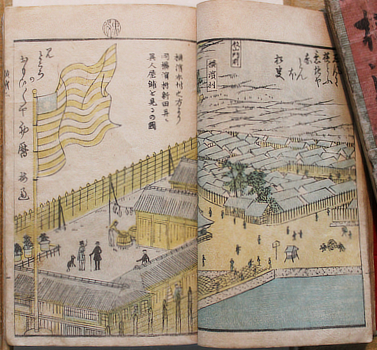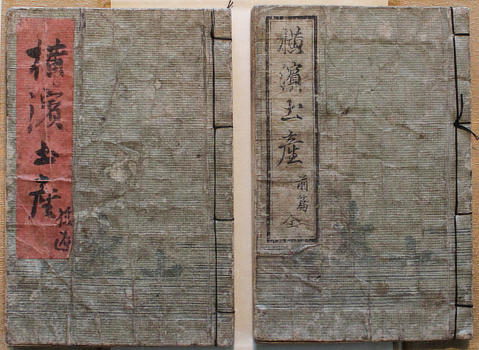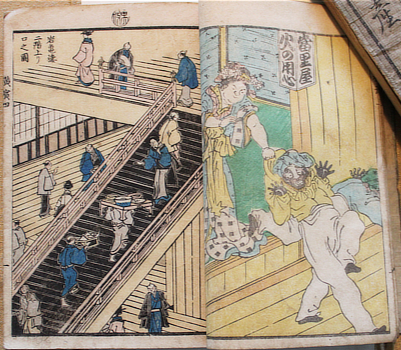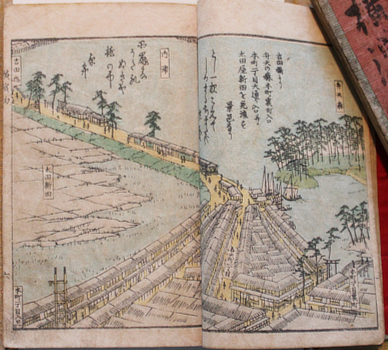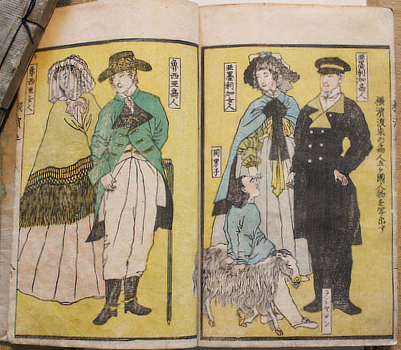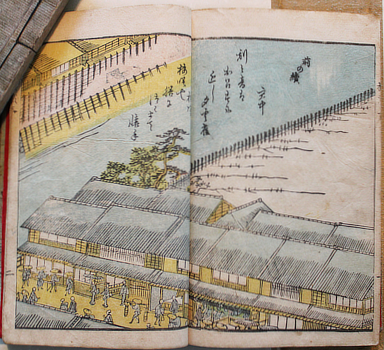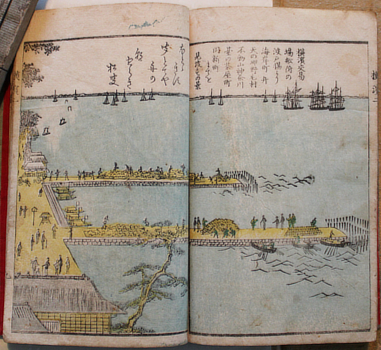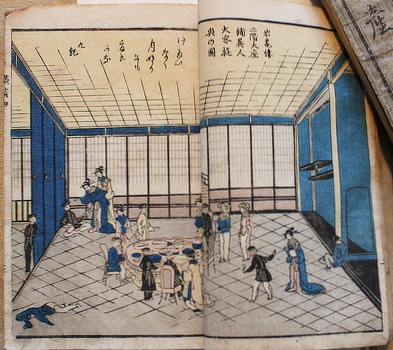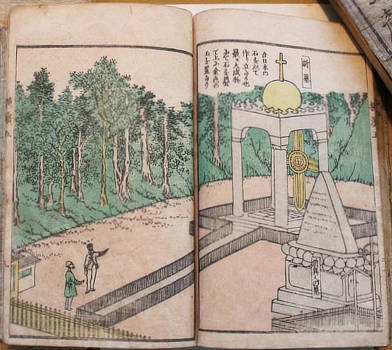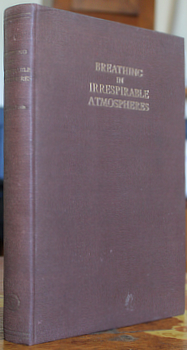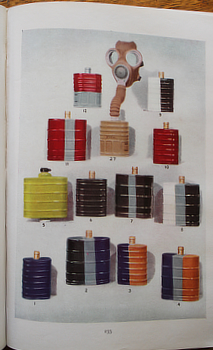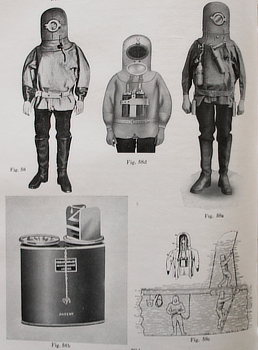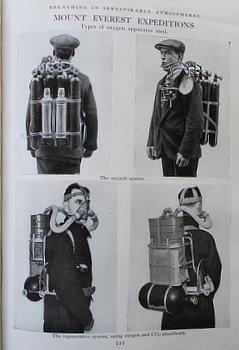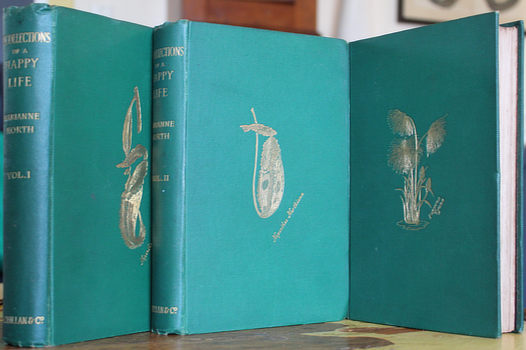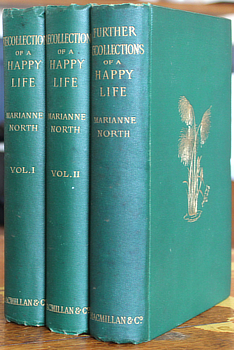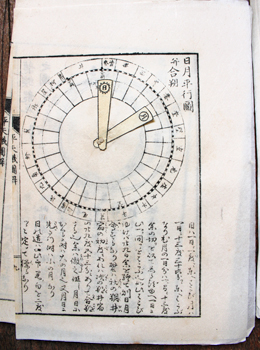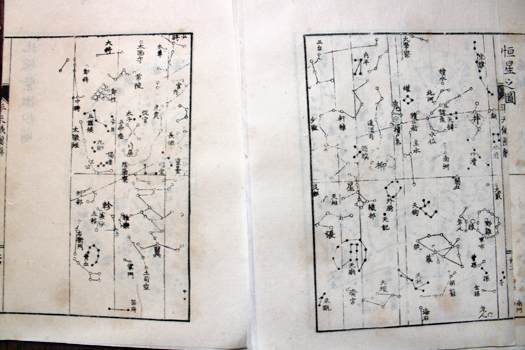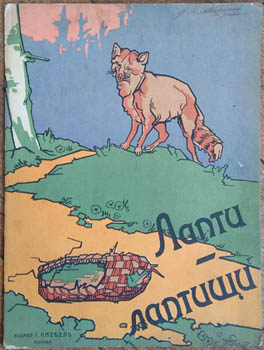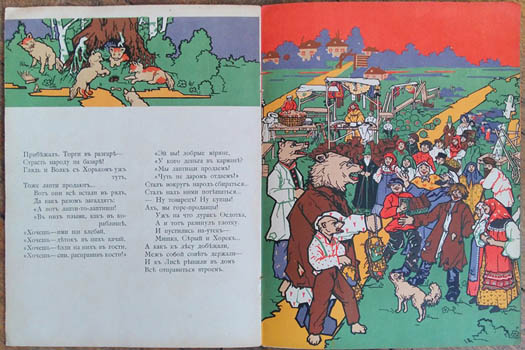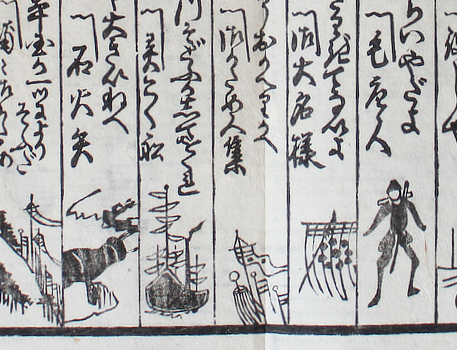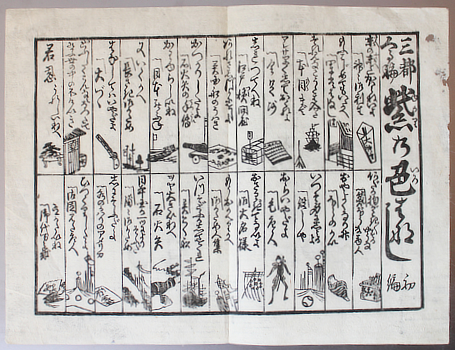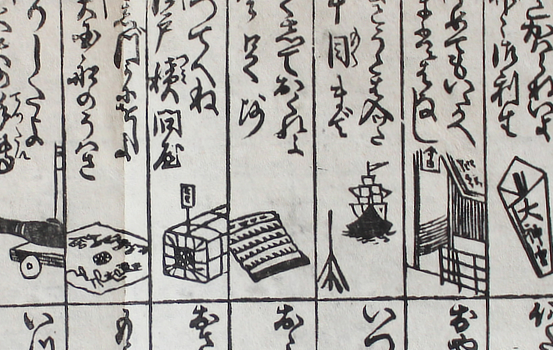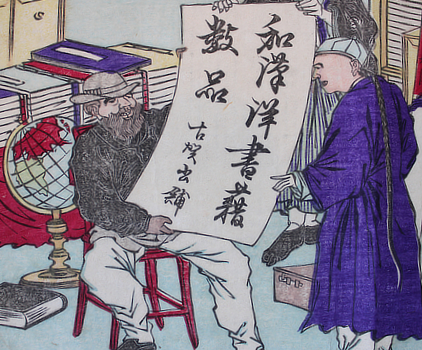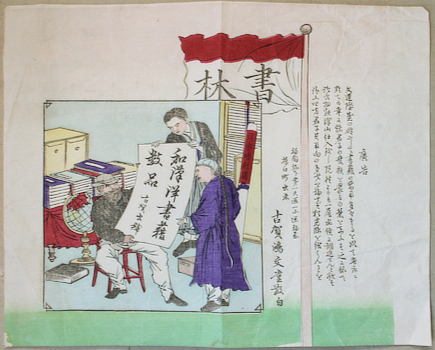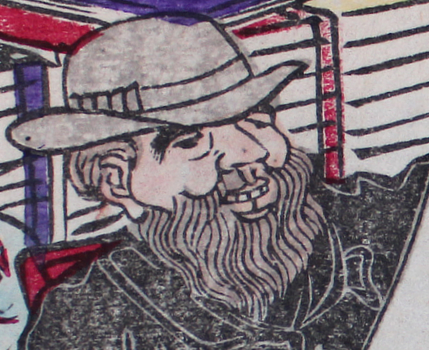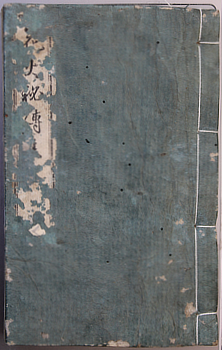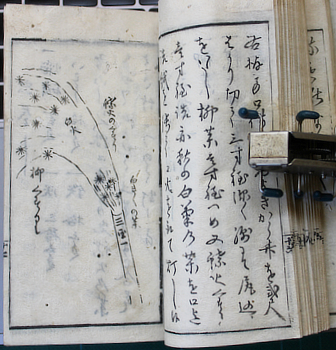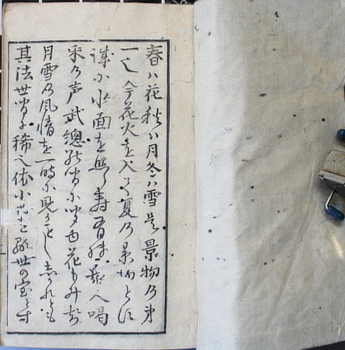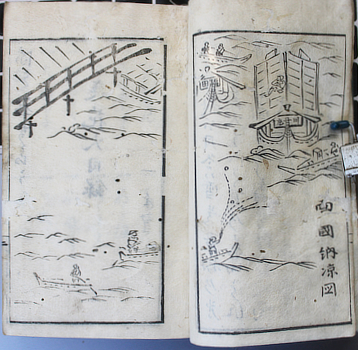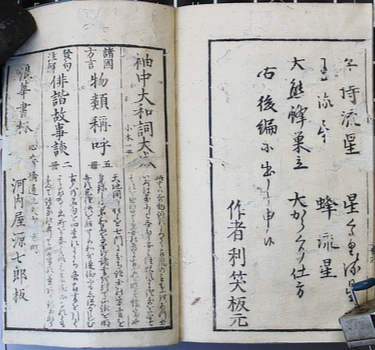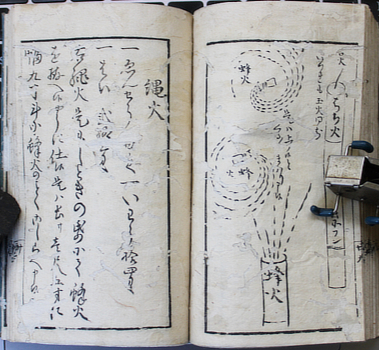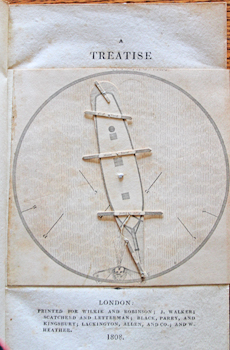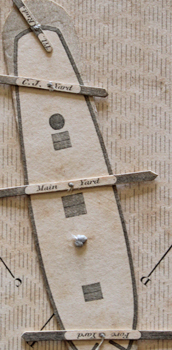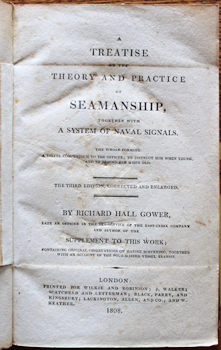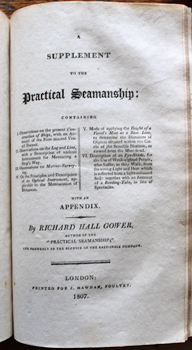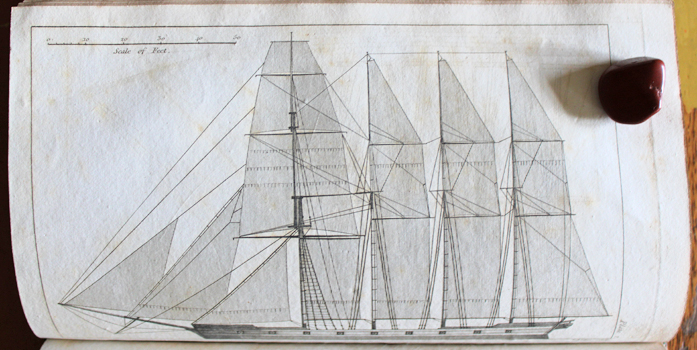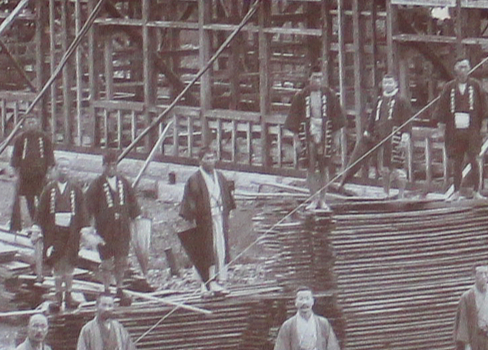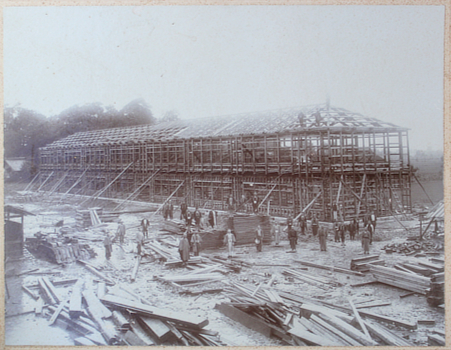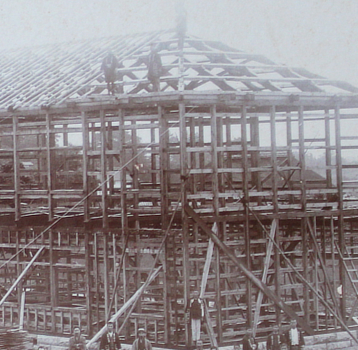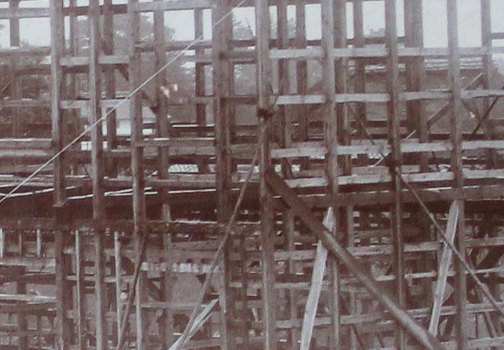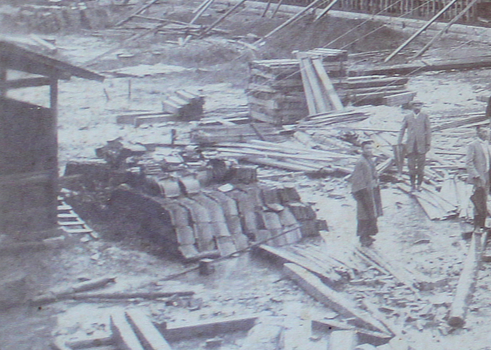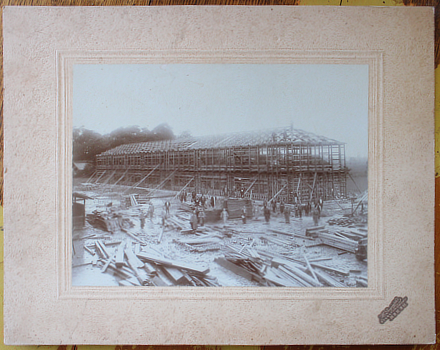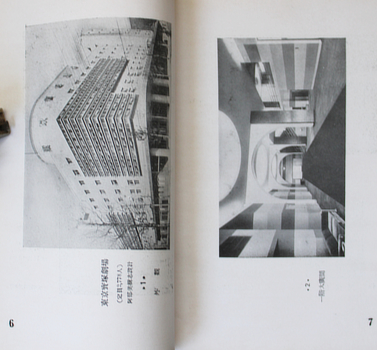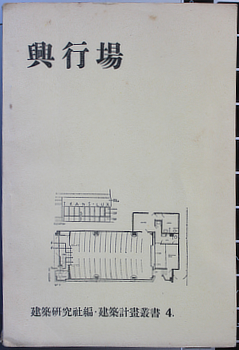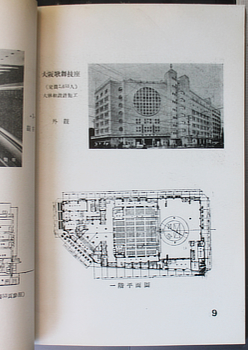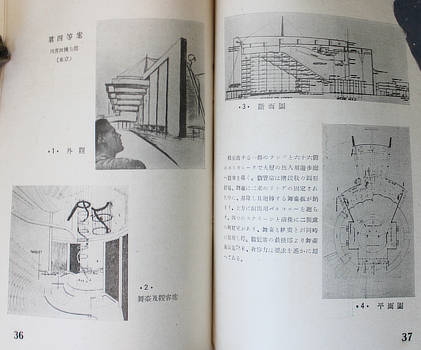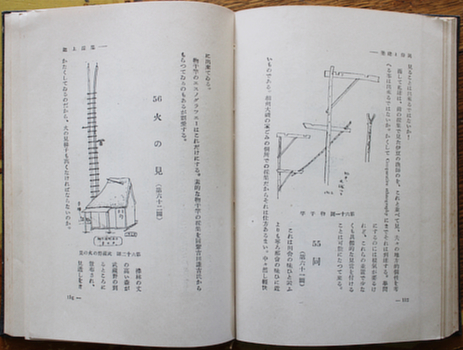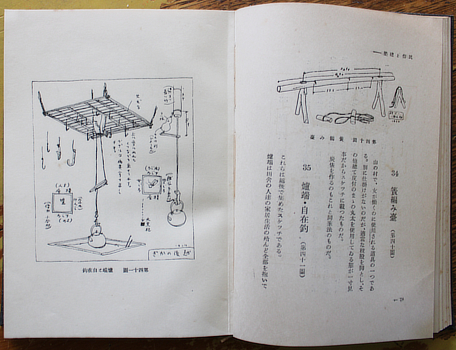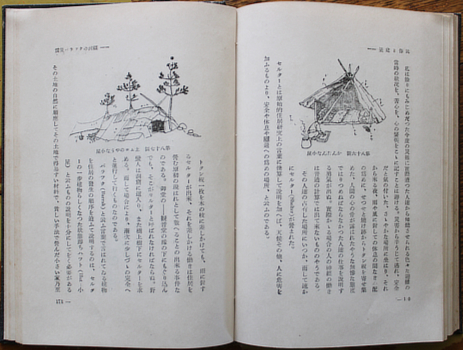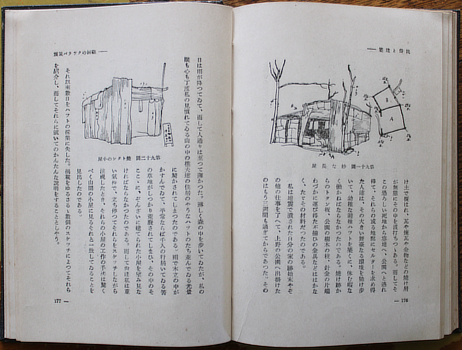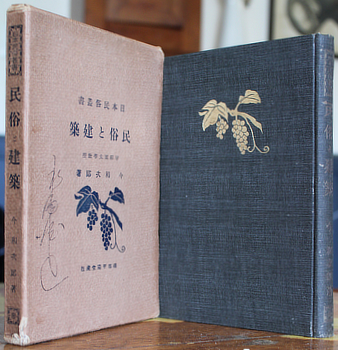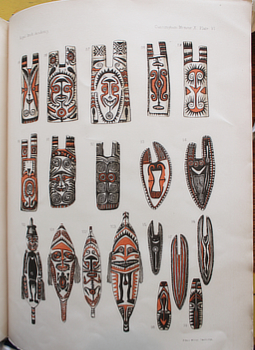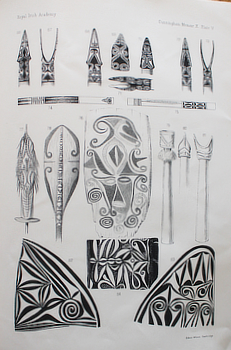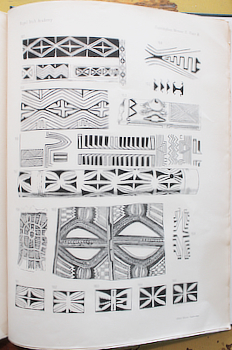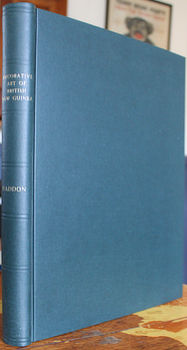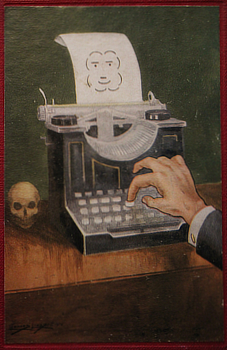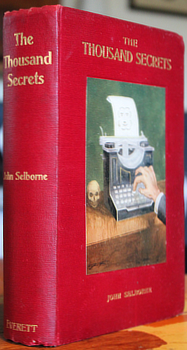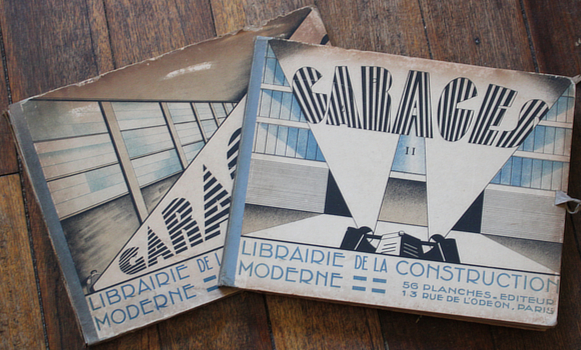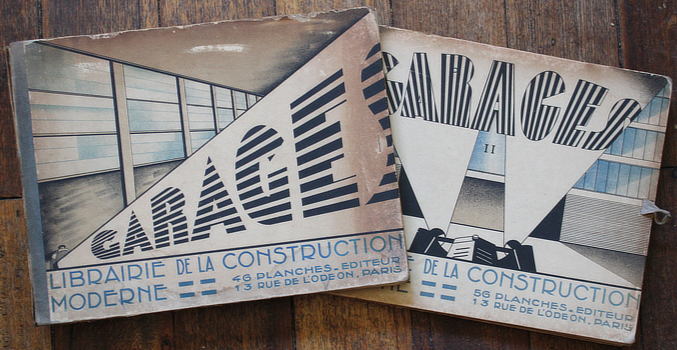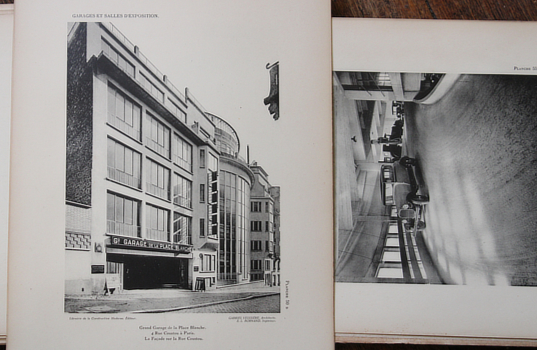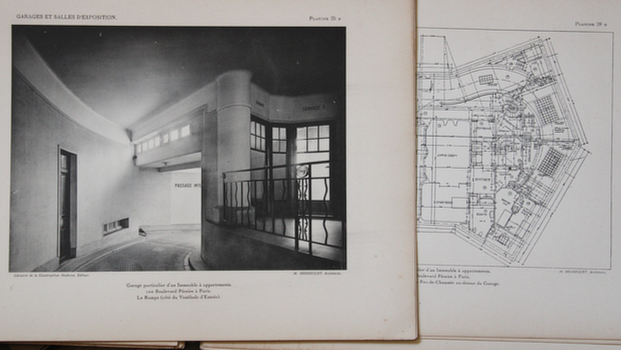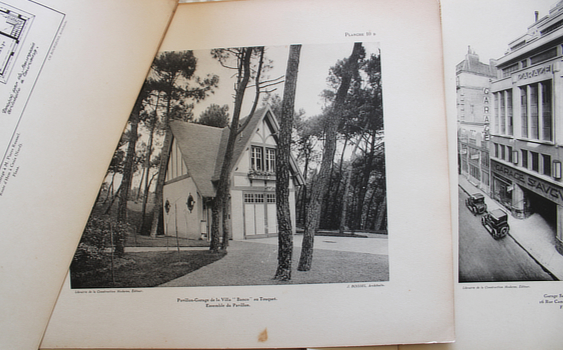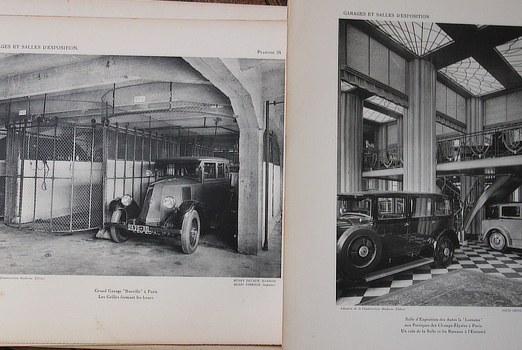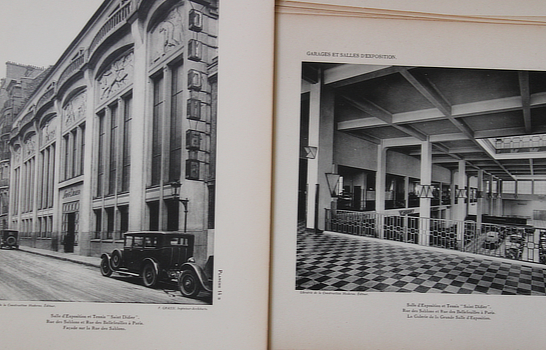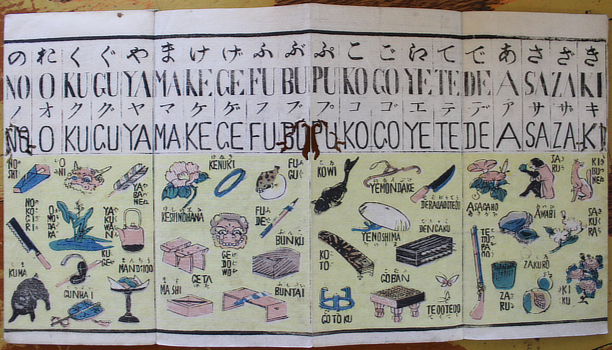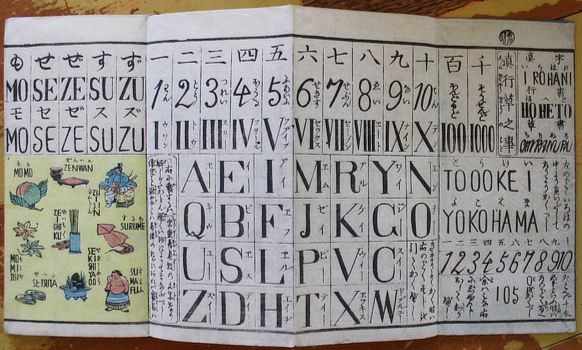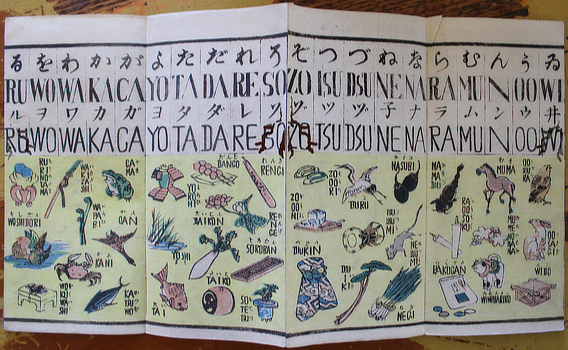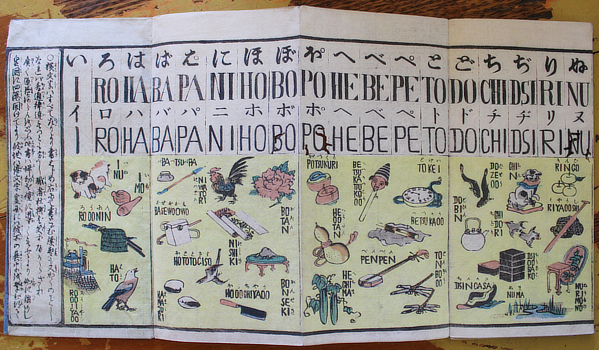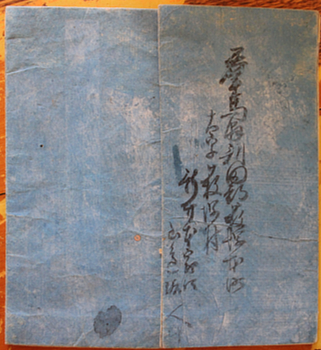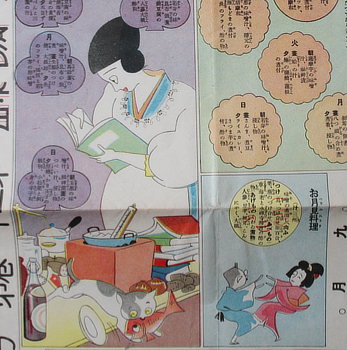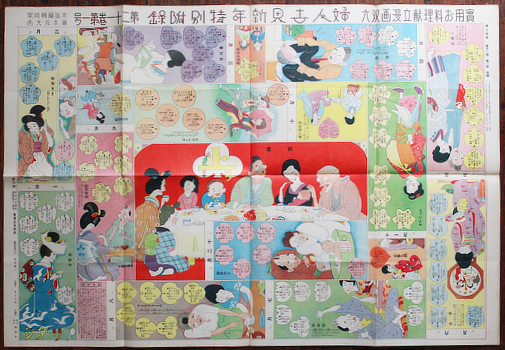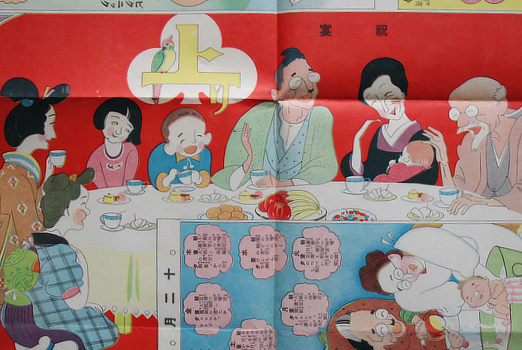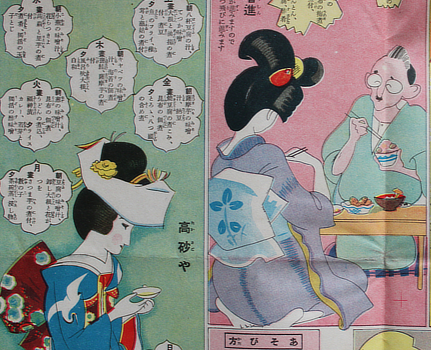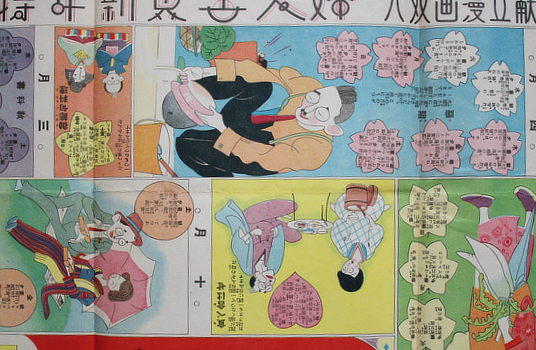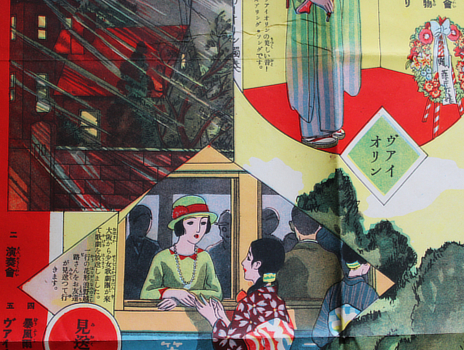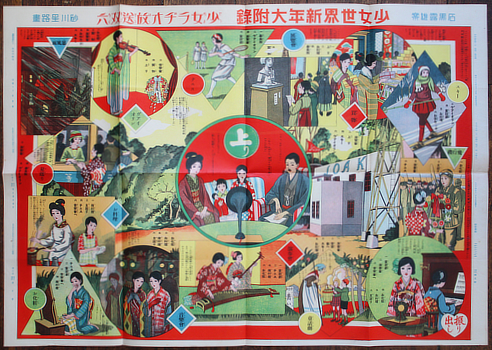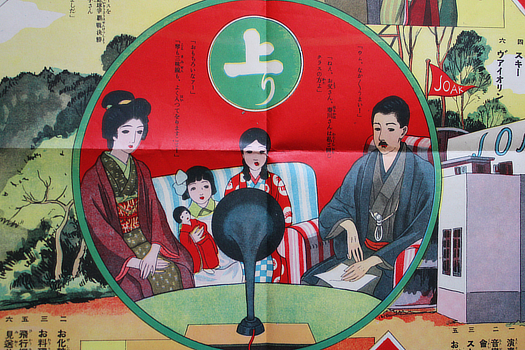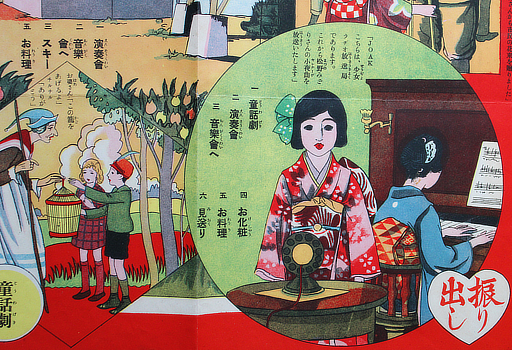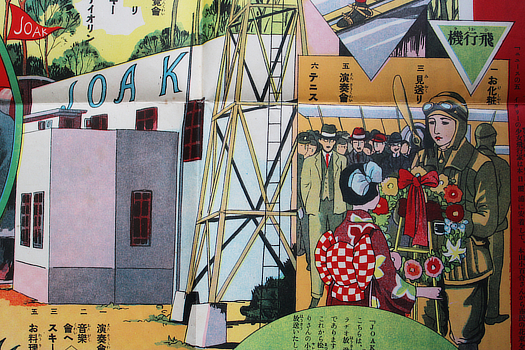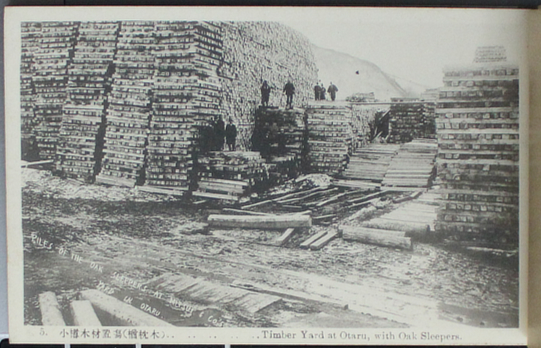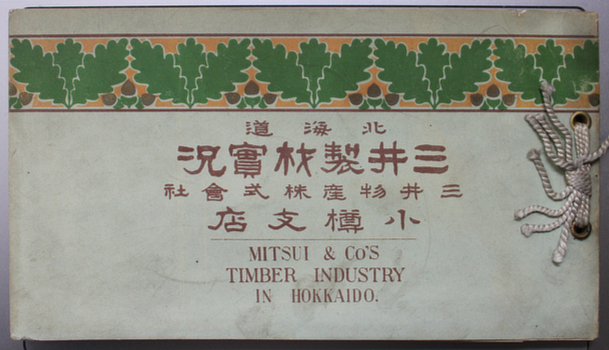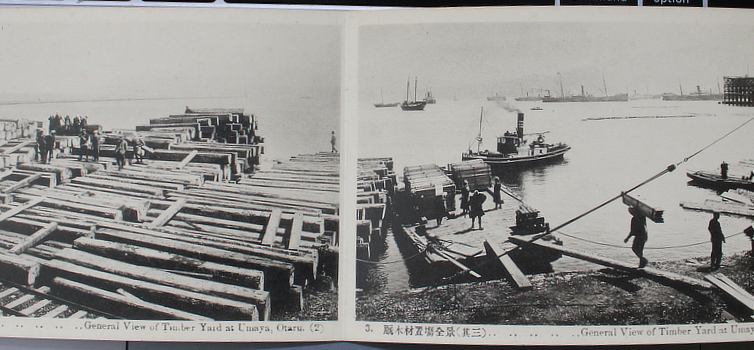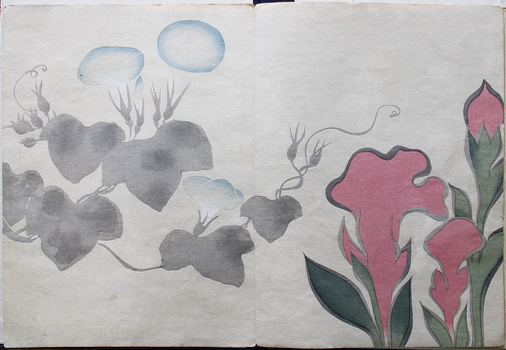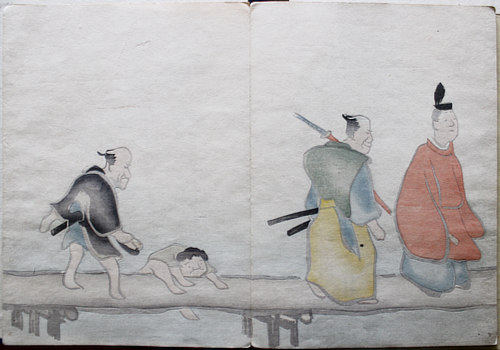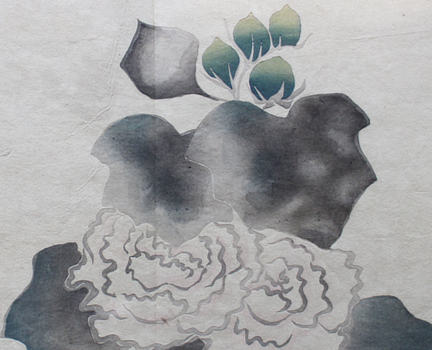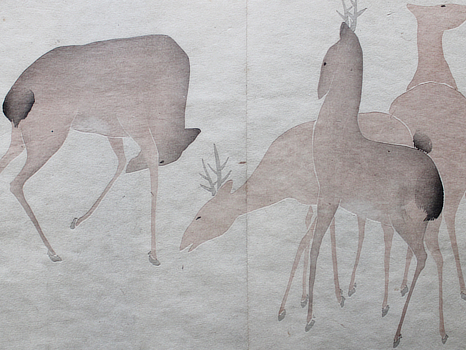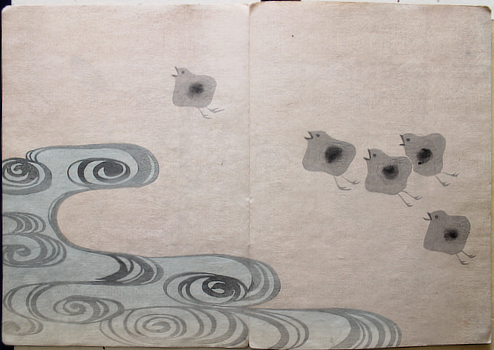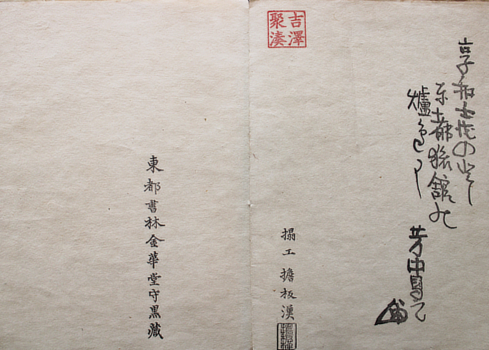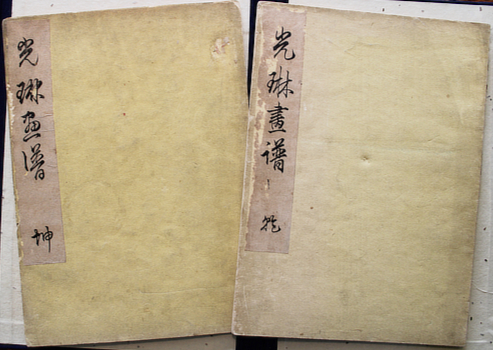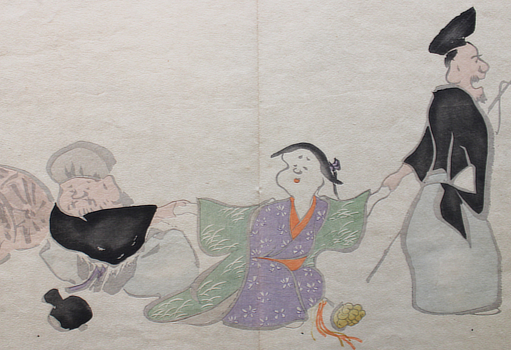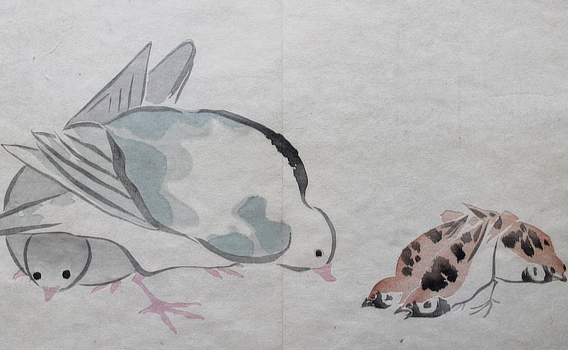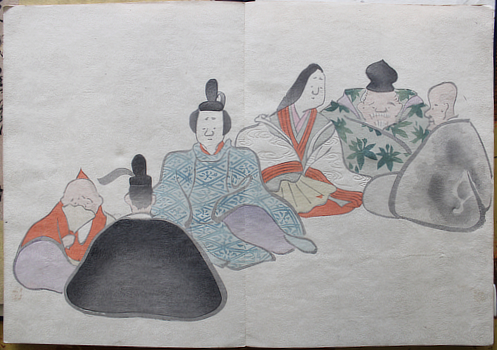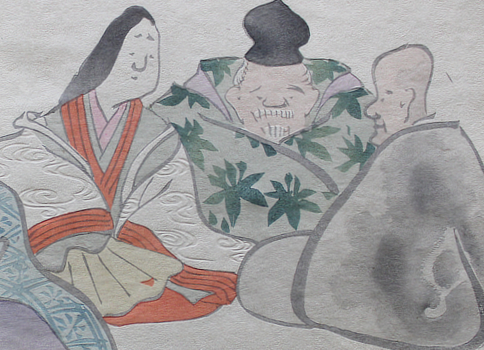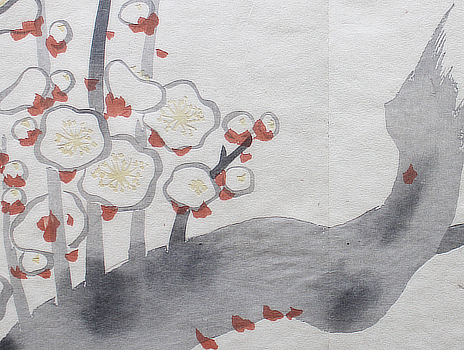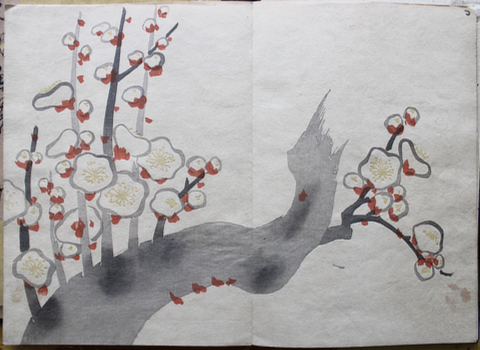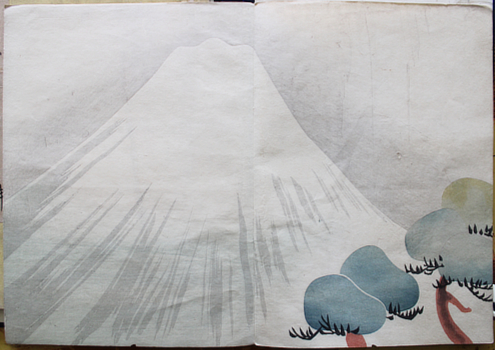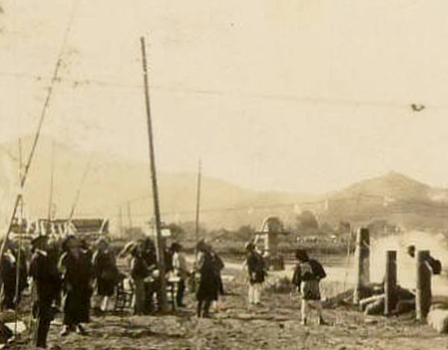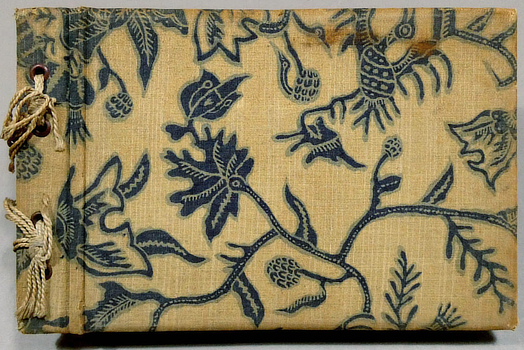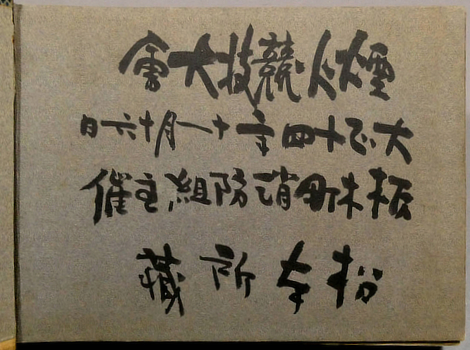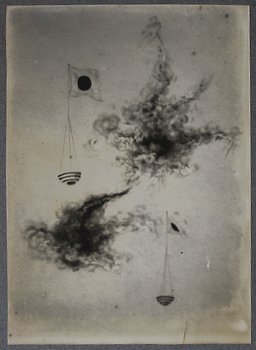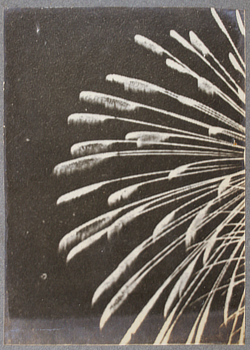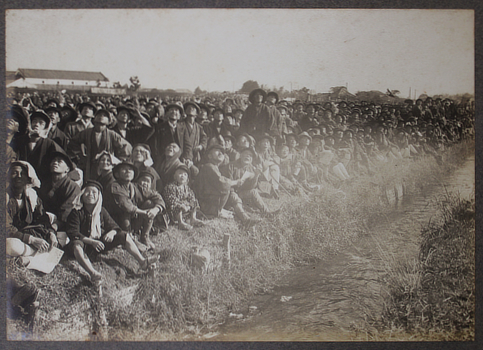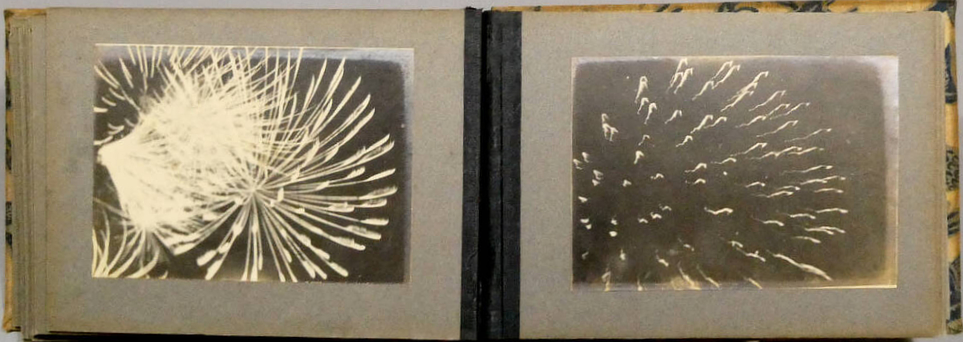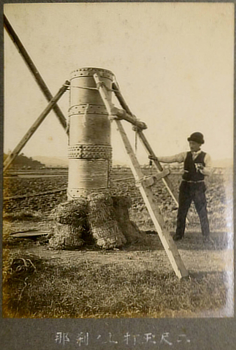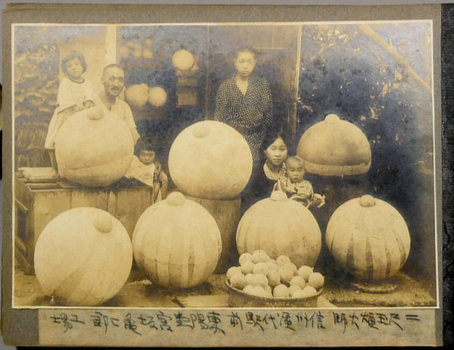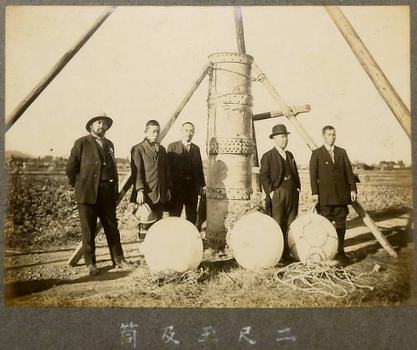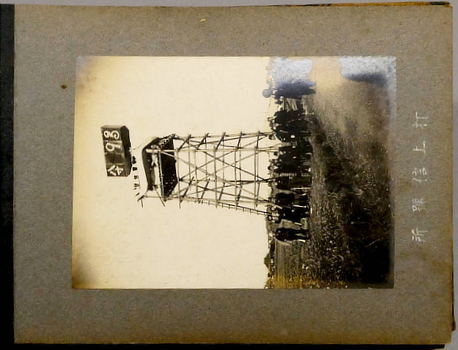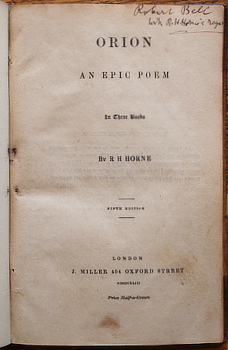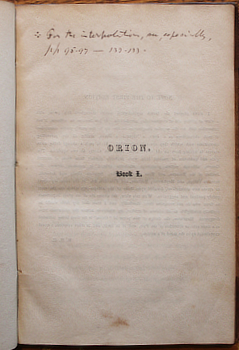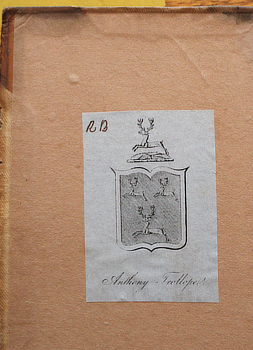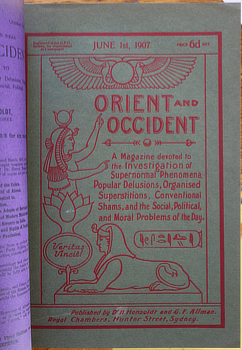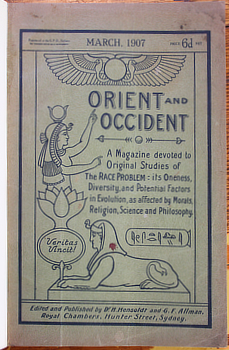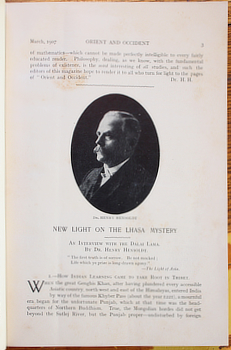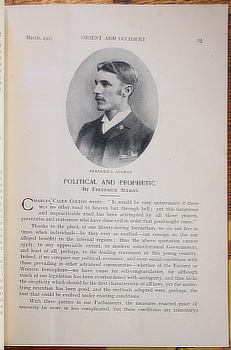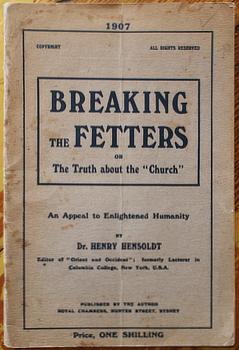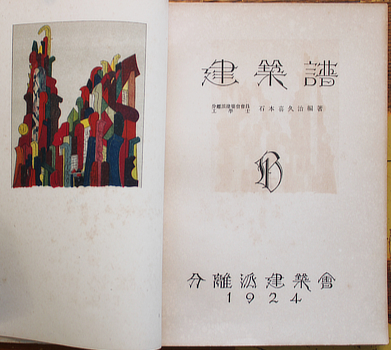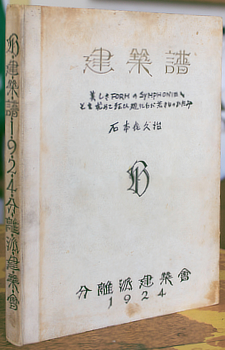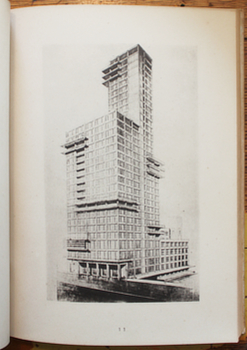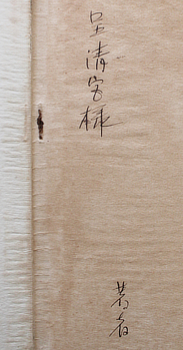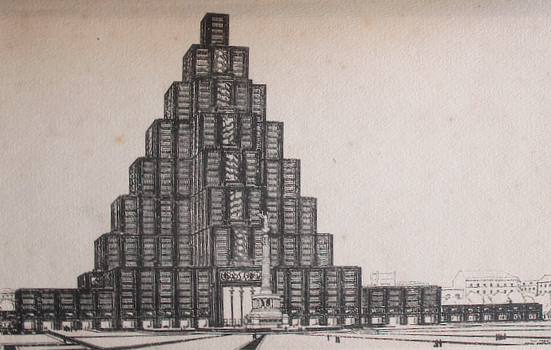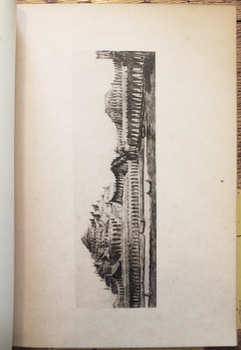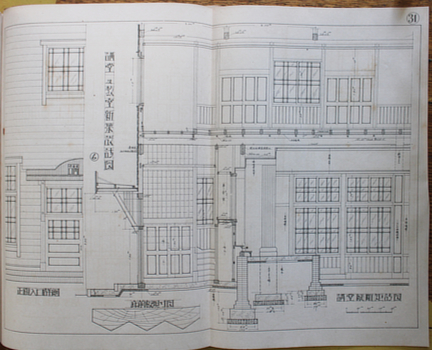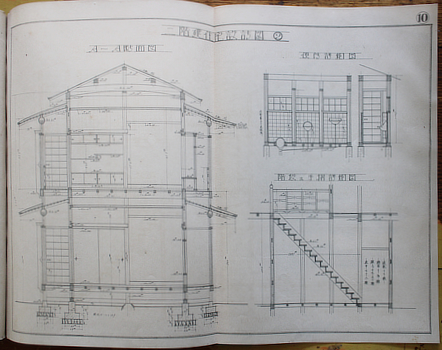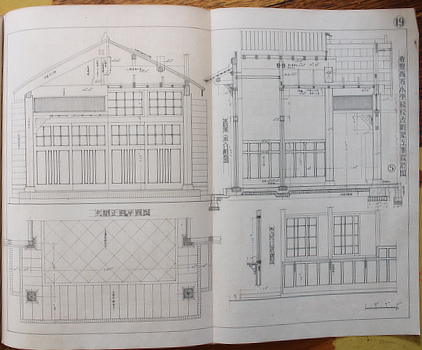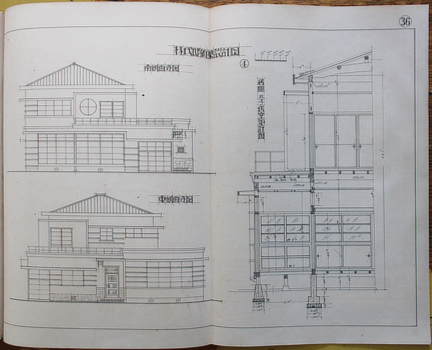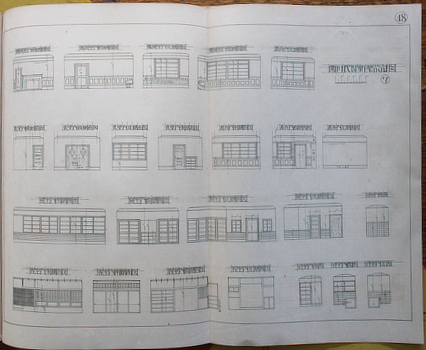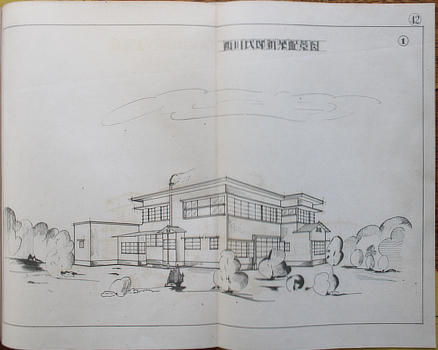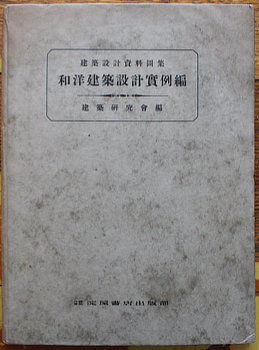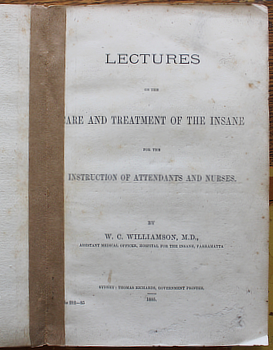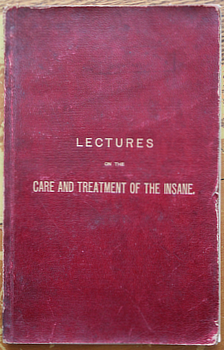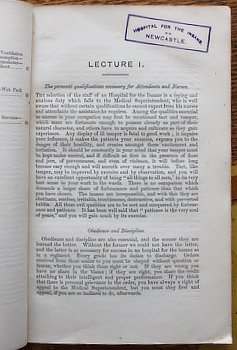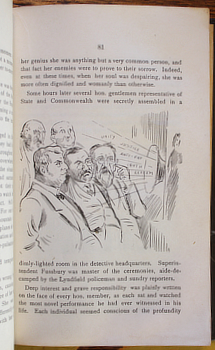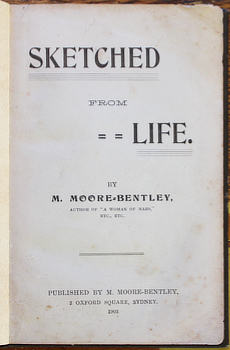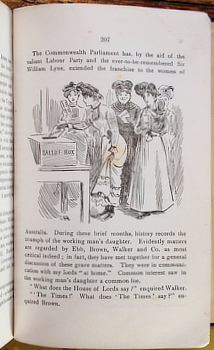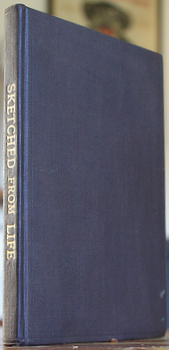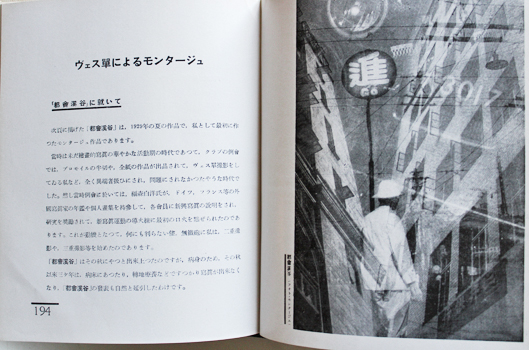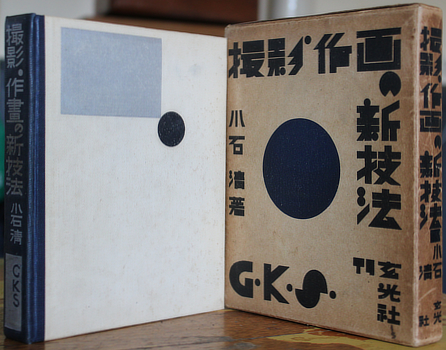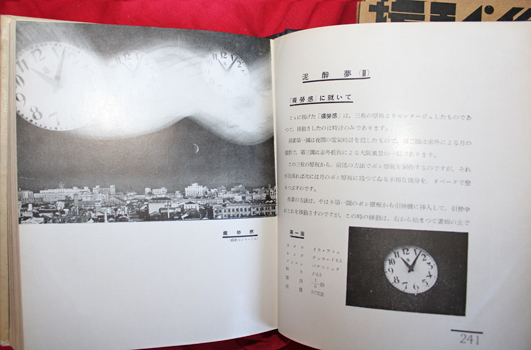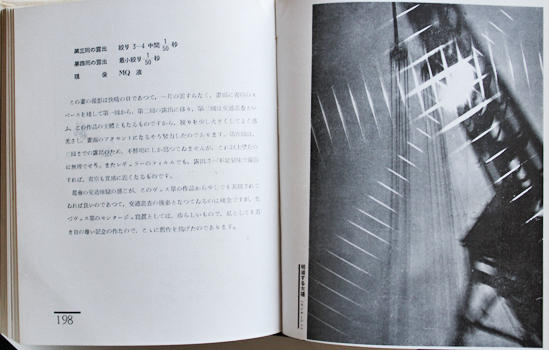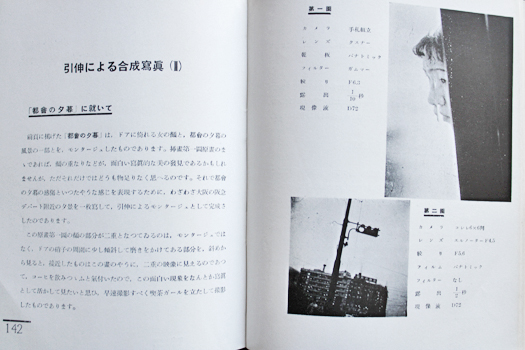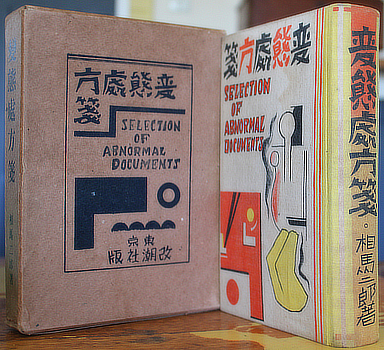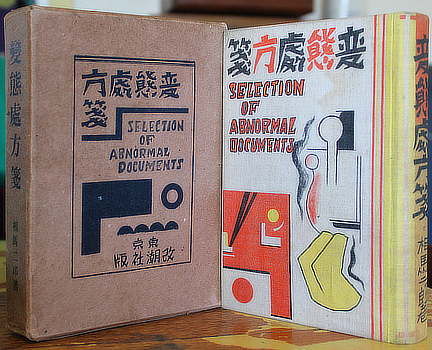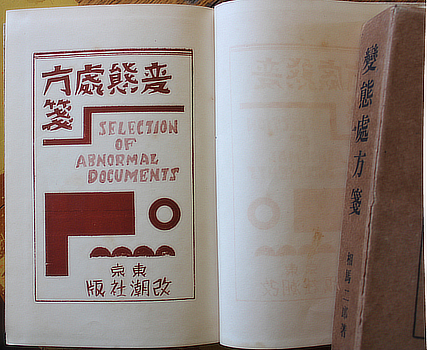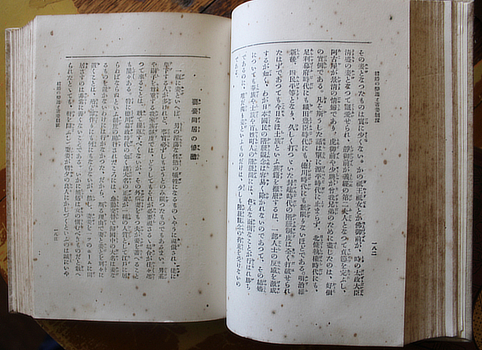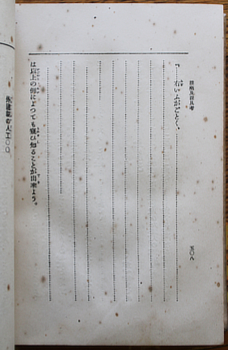"if there are people enough to make it pay, then Sydney is in a parlous state indeed"
HENSOLDT, Dr. H. and F. Allman [ed]. [Henry, originally Heinrich; & Frederick; respectively]. Orient and Occident : a monthly magazine devoted to original studies of the race problem ... By No.3 it had changed to: A monthly magazine devoted to the investigation of supernormal phenomena, popular delusions, organised superstitions, conventional shams ...
and
Breaking the Fetters ; an appeal to enlightened humanity [subtitled: The Truth About the "Church" on the front cover.
Sydney, March to October 1907; Eight numbers, 24x17cm, together in modern cloth, the first number with front and back wrappers preserved, the rest with one or the other. An occasional bit of marginalia, rather good.
and
Sydney, the author 1907: octavo publisher's printed wrapper; 36pp. Signs of use but pretty decent. Inscribed "with the compliments of the author". Au$1400
The complete run of this product of the Australian chapter in the life of this liar, fraud, bigamist, thief, and quack. The lies begin in the masthead with the 'Dr.' and really take off on page three with his interview with the Dalai Lama during his first visit to Lhasa.
The most complete life of Hensoldt seems to be that of Stevenson and Gill on microscopist.net. He did make use of whatever education he received from the family business of his father, microscopic slide maker Moritz Hensoldt. During his stay in Sydney - he was apparently here by 1905* - he married wife four or maybe more, Hillend heiress Ada Wythes in January 1908, liquidated her property and they set off for a honeymoon trip that would end on a Texas ranch. It ended in Chicago in February where he and her money vanished. The portrait of him in the Chicago Tribune is the same as that in the first number here. Ada must have been carrying one.
The lies don't stop there. In San Francisco, in May 1908, one Edward P. Bailey gave an interview to the Chronicle saying that he had sold up properties and come from Sydney to meet Hensoldt who would give him half shares in a mother lode in Texas. He claimed to have organised Hensoldt's lecture tours in Australia, helped set up Orient and Occident and introduced Hensoldt to the best of society. Now an Edward P. Bailey was, in October 1907, a certified masseur offering various electrical treatments, in the Royal Chambers which was also the address of Hensoldt. And some twenty years later Australian born Adventurer (capital A) Col. Edward P. Bailey was offering tours of 'The Great Australian Bush' out of San Marino, California.
The vanished Hensoldt supposedly died in 1914 but Stevenson & Gill have convincing evidence that Paul Börnsen, Hensoldt wife two, Augusta, and daughter Johanna arrived in America in October 1908 and settled in Maryland, later moving to Washington DC. Börnsen there went into the radium as a cure-all industry. In 1917 the FBI began investigating him as a possible German spy and Börnsen vanished. Augusta Hensoldt Börnsen reported herself as a widow in the 1920 census but no death record of a Hensoldt or Börnsen could be found.
Frederick Allman is an ephemeral figure; he vanished from the masthead with number four, presumably without anyone's money. I had been wondering, until I noticed that, whether he was the reason this magazine is so well printed on good paper. But the quality doesn't drop and the glimpses of Frederick Allman over the next few years: letters to the newspapers, a Theosophical article, letters to Josiah Cocking; sketch a well meaning, socialist, pacifist, mystical health crank. The sort of person who usually inhabits a boarding house rather than a harbourside mansion. The Sydney Mail review of the first issue tells us he is from Yass and is a long time civil servant. The Burrangong Argus tells us he had been a road engineer at Young. Definitely boarding house material.
In any case Hensoldt had been writing most of the magazine anyway and I doubt it was much of an effort to churn out the rest under the pen names that take over in the last numbers.
Trove finds four locations and Worldcat adds most of a complete run at Stanford. I'm not sure, from their catalogue, whether the SLNSW has a complete run; the other three locations are complete. For Breaking the Fetters Trove finds only the NL and Mitchell.
"Taking it all round, Sydney has reason to be proud of this well-printed, wonderful magazine, and if there are people enough to make it pay, then Sydney is in a parlous state indeed. I wonder what is behind the magazine?" Review of the first number in the Sydney Stock and Station Journal.
* This is based on the statement of Edward P. Bailey who said he had known him for three years; ie most unreliable. Advertisements for Hensoldt's Asutralian lectures begin appearing in August 1906.
Breaking the Fetters completes, I believe, the works of Hensoldt in Australia. The adverts for Orient and Occident on the back cover date it to about the middle of the year. The Sydney Stock and Station Journal reviewer doesn't disappoint: " It is the most awful pamphlet I've seen issued in Australia, and if the author does not get hanged, or burned, or sent to Darlinghurst, it only shows that this world is a safer place than it used to be ... What a man Henry is ! He pays us a great compliment in thinking that we are liberal enough and free enough, and intelligent enough not to resent his remarks."
